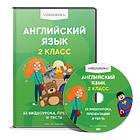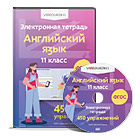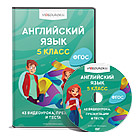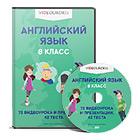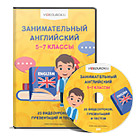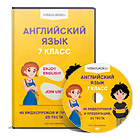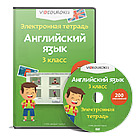3-курс 2-модуль. Анс-17 к -2. Башталгыч класстарда чет тилин окутуунун усулу

Список вопросов теста
Вопрос 1
Listener provides text that goes beyond what is given (i.e., giving the end of a story, solving a problem, filling in missing lines)
Варианты ответов
- Extending
- Duplicating
- Modeling
- Condensing
Вопрос 2
Listener repeats exact message (i.e., dictation, translation, oral repetition)
Варианты ответов
- Duplicating
- Extending
- Condensing
- Modeling
Вопрос 3
Listener uses text as a model for imitation (i.e., ordering a meal after listening to a model)
Варианты ответов
- Modeling
- Extending
- Duplicating
- Condensing
Вопрос 4
Listener is active in face-to-face conversations
Варианты ответов
- Conversing
- choosing
- transferring
- answering
Вопрос 5
As Pinter (2006) explains, “The first building blocks that allow children to move from listening to speaking and to begin to participate in interactions with others are so-called …
Варианты ответов
- ‘unanalysed chunks’”
- “sentences patterns”
- “speech patterns”
- “grammar rules”
Вопрос 6
In most EFL classrooms, teachers use lots of dialogs to practice speaking, particularly ones found in the textbook. These dialogs usually reflect real-life tasks, like greetings, buying something at a store, visiting a doctor, asking for directions, asking for the time, etc. In addition, the different modes of one-way input, like TV shows and commercials, news and weather reports, and movies, are actually models of communication among two or more people.
Варианты ответов
- Use speaking activities that reflect real-life communication
- Build classroom routines in English.
- Use speaking activities that are developmentally appropriate.
- Use a variety of activities to improve both accuracy and fluency.
Вопрос 7
For YLs, who like to be active and move around, it is very helpful to use role play and drama to practice the language.
Варианты ответов
- Use speaking activities that reflect real-life communication
- Build classroom routines in English.
- Use speaking activities that are developmentally appropriate.
- Use a variety of activities to improve both accuracy and fluency.
Вопрос 8
As Cameron (2001) explains, “Discourse in young learner classrooms should follow patterns children find familiar, from their home and family, or from their school experience and should not demand more of children than they can do, in terms of imagining someone else’s state of mind or expressing causes and beliefs”. What principle is it?
Варианты ответов
- Use speaking activities that are developmentally appropriate.
- Use speaking activities that reflect real-life communication
- Build classroom routines in English.
- Use a variety of activities to improve both accuracy and fluency.
Вопрос 9
… is the active use of language to express meanings so that other people can make sense of them.
Варианты ответов
- Speaking
- Listening
- Writing
- Reading
Вопрос 10
To speak with respect to grammar and pronunciation - …
Варианты ответов
- to speak accurately
- to speak fluently
- to speak loudly
- to speak silently
Вопрос 11
To speak with respect to speed and natural flow of the language.
Варианты ответов
- to speak fluently
- to speak loudly
- to speak silently
- to speak accurately
Вопрос 12
1. Build classroom routines in English.
2. Use speaking activities that reflect real-life communication
These principles are … principles
Варианты ответов
- Speaking
- Listening
- Reading
- Writing
Вопрос 13
Hello! Hi! How are you? I'm fine. And you? Who is missing? Where is Adam? Good-bye!
See you tomorrow! - What principle is it?
Варианты ответов
- Build classroom routines in English.
- Use speaking activities that reflect real-life communication
- Use speaking activities that are developmentally appropriate.
- Use a variety of activities to improve both accuracy and fluency.
Вопрос 14
The teacher can elicit examples based on students’ personal lives. This is a way to check comprehension and give them a chance to express something about themselves.
T: Where is your house?
S: It's on Jumeirah Road.
Варианты ответов
- Personalizing
- Repetition
- Paraphrasing
- Question and Answer
Вопрос 15
… is a process of relating written symbols to language, of constructing meaning from written text (Goodman, 2005), or “ sense and deriving meaning from the printed word” (Linse, 2005, p. 69).
Варианты ответов
- Reading
- Writing
- Speaking
- Listening
Вопрос 16
… … is an approach that uses learner’s oral language as the basis of a written story. The learners (a class, small group, or individual student) dictate their “story” to someone who is a more competent writer (usually the teacher, but it may also be an older, more proficient student), who writes what the learners dictate.
Варианты ответов
- Language experience
- Phonics way
- Whole language way
- Sentence way
Вопрос 17
… … … … focuses on accuracy, providing controlled or guided activities to help children learn the basics of writing, working on spelling, grammar, and mechanics, in a bottom-up fashion.
Варианты ответов
- A product-based approach
- A process-based approach
- A different approach
- A book-based approach
Вопрос 18
. .. .. … the teacher involves the students in reading together, using something as a pointer (a long stick, a laser pointer, or even the bouncing ball of a karaoke song in some EYL videos) with a big book (if the class is small), a video of a book, a PowerPoint, or a book projected on an interactive whiteboard or from a document reader.
Варианты ответов
- In shared reading
- Reading aloud
- Guided reading
- Independent
Вопрос 19
In a … … the teacher works with small groups of children who are at the same reading level. The goal is to let the children read, noting problems they have with specific words or punctuation, and providing support and modeling reading strategies for the children to practice (Herrell, 2000).
Варианты ответов
- Guided reading
- Independent reading
- Reading aloud
- In shared reading
Вопрос 20
Something to communicate -
Варианты ответов
- topic
- sound
- alphabet
- letter
Получите комплекты видеоуроков + онлайн версии
 0
0 58
58 Нравится
0
Нравится
0

 Создать тест
Создать тест Вход
Вход